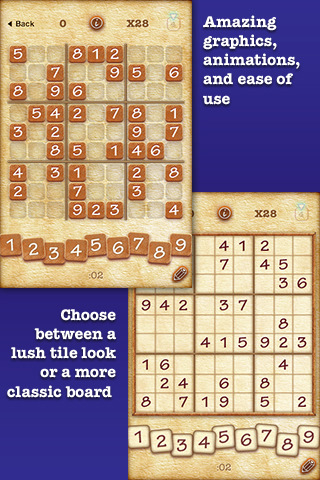

I tend to agree, but I didn’t hold a lack symmetry against the candidates. Although not technically a requirement, many purists don’t consider non-symmetrical puzzles to be “true” Sudoku. Unfortunately, none of the better Sudoku games available for the iPhone and iPod touch exclusively use symmetrical puzzles-those in which the pre-filled boxes (called givens) in opposing regions mirror each other.

1 (left), Big Bang Sudoku (middle), and EA’s Sudoku (right)

Includes puzzles for multiple skill levels. (For example, a couple Sudoku apps that didn’t make the cut satisfied most criteria, but their methods for making notations obscured other parts of the puzzle.) Offers good usability: easy-to-use input methods, clear controls, and readable graphics. (These markings are often called notations.) Provides a way to note (or “pencil in”) the possible values for each square as you solve a puzzle. Includes puzzles with only a single solution. (Some Sudoku variants break the standard 9-by-9 grid into non-square geometric areas, or use colors or images instead of numbers.) Uses a standard 9-by-9-cell grid of numbers with nine square (3-by-3-cell) regions.


 0 kommentar(er)
0 kommentar(er)
